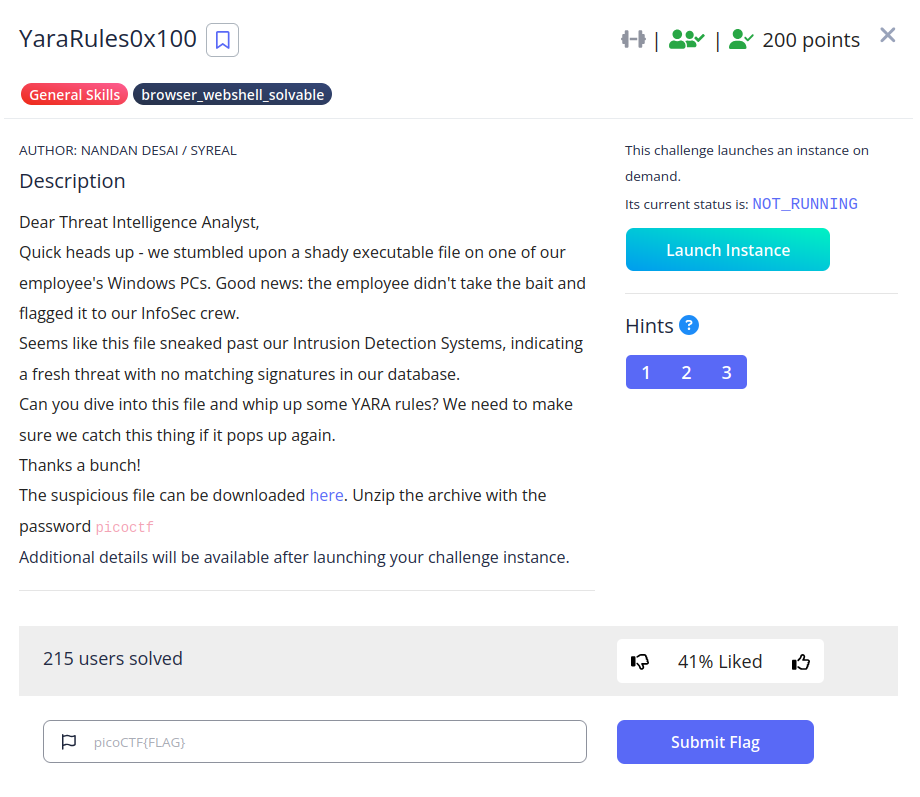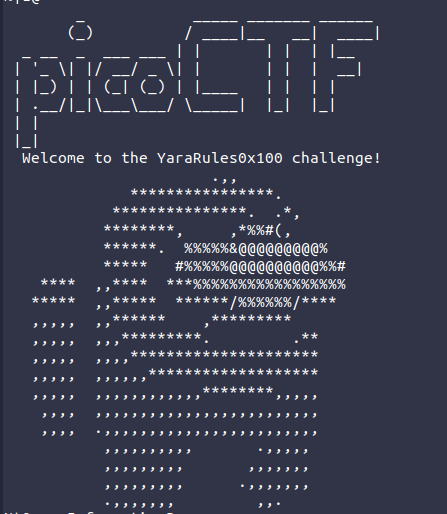Problem

Solution
The suspicious file, aptly named suspicious.exe, is a UPX-packed binary. We can tell by the fact that the string “UPX” precedes some ZLIB-compressed data. In order to get some meaningful information with which we can create our YARA rules, we must unpack the binary.
Running upx -d suspicious.exe -osusicious_unpacked.exe outputs the unpacked binary as susicious_unpacked.exe. Taking a look at the strings in this file, we see the following:

(among others). While this might make for a rather unique signature, I decided a more complete ruleset ought to rely on other strings, including which Windows API calls are frequently used by malware.
rule packed_YaraRules0x100 {
strings:
$upx1 = "UPX!" ascii
$upx2 = "UPX0" ascii
$upx3 = "UPX1" ascii
$str1 = "YaraRules0x100" ascii
$str2 = "LoadLibrary" ascii
$str3 = "VirtualProtect" ascii
condition:
// REF: https://dmfrsecurity.com/2021/12/30/100-days-of-yara-day-11-upx/
uint16(0) == 0x5A4D and
any of ($upx*) and
all of ($str*)
}
rule unpacked_YaraRules0x100 {
strings:
$str1 = "Welcome to the YaraRules0x100 challenge!" ascii
$str2 = "Suspicious" wide ascii
$str3 = "picoCTF" wide ascii
$str4 = "This is a fake malware. It means no harm" wide ascii
$in1 = "SHELL32.dll" ascii
$in2 = "KERNEL32.dll" ascii
$api1 = "OpenProcess" ascii
$api2 = "CreateToolhelp32Snapshot" ascii
$api3 = "GetProcAddress" ascii
$api4 = "GetCurrentProcess" ascii
$api5 = "GetCurrentProcessId" ascii
$api6 = "CreateThread" ascii
$api7 = "IsDebuggerPresent" ascii
$api8 = "QueryPerformanceCounter" ascii
$api9 = "LookupPrivilegeValue" ascii
$api10 = "AdjustTokenPrivileges" ascii
$api11 = "DebugActiveProcess" ascii
$api12 = "Sleep" ascii
$sec1 = "<requestedExecutionLevel level='asInvoker' uiAccess='false' />" ascii
condition:
any of ($str*) and
any of ($in*) and
all of ($api*) and
all of ($sec*)
}